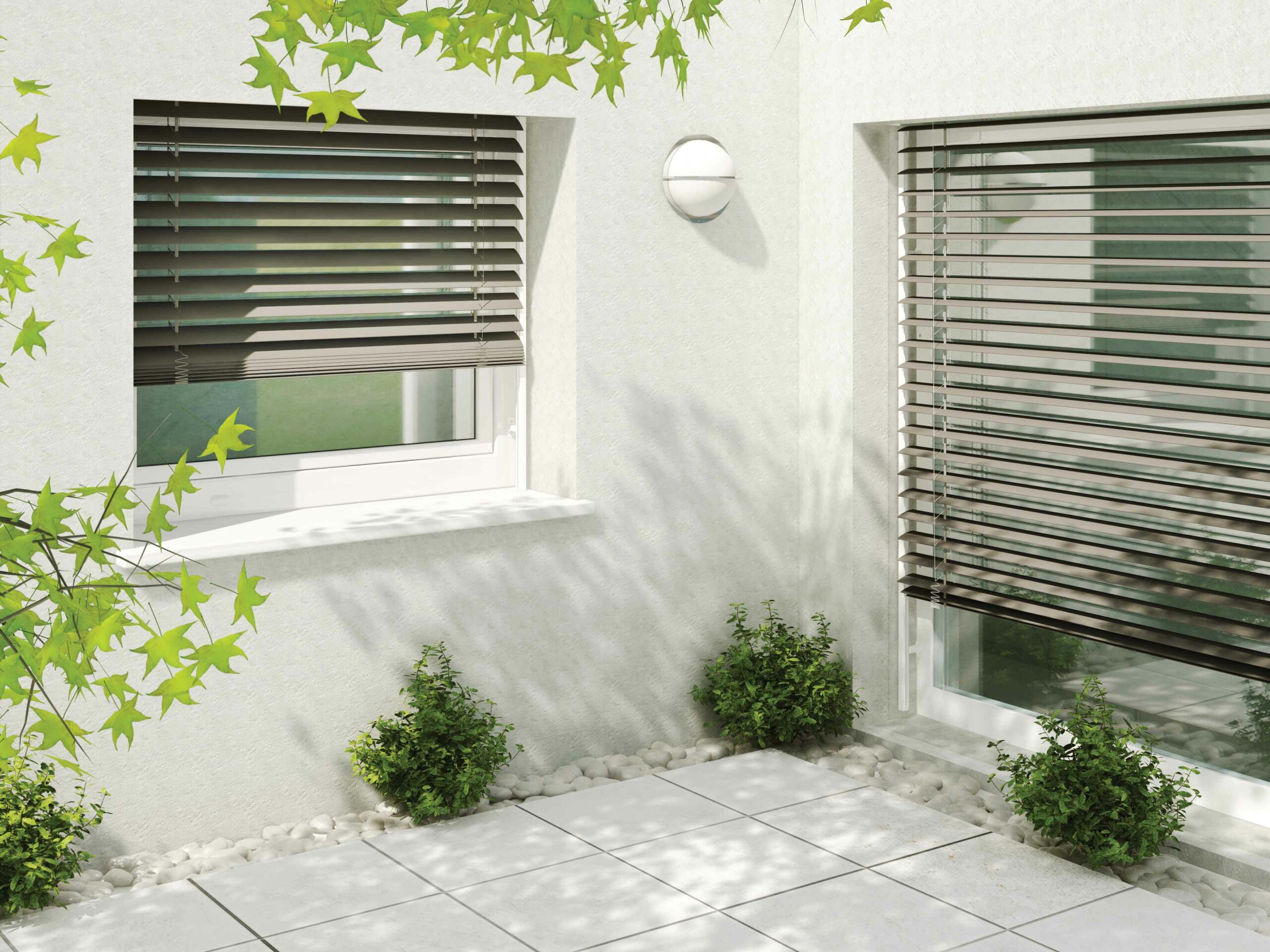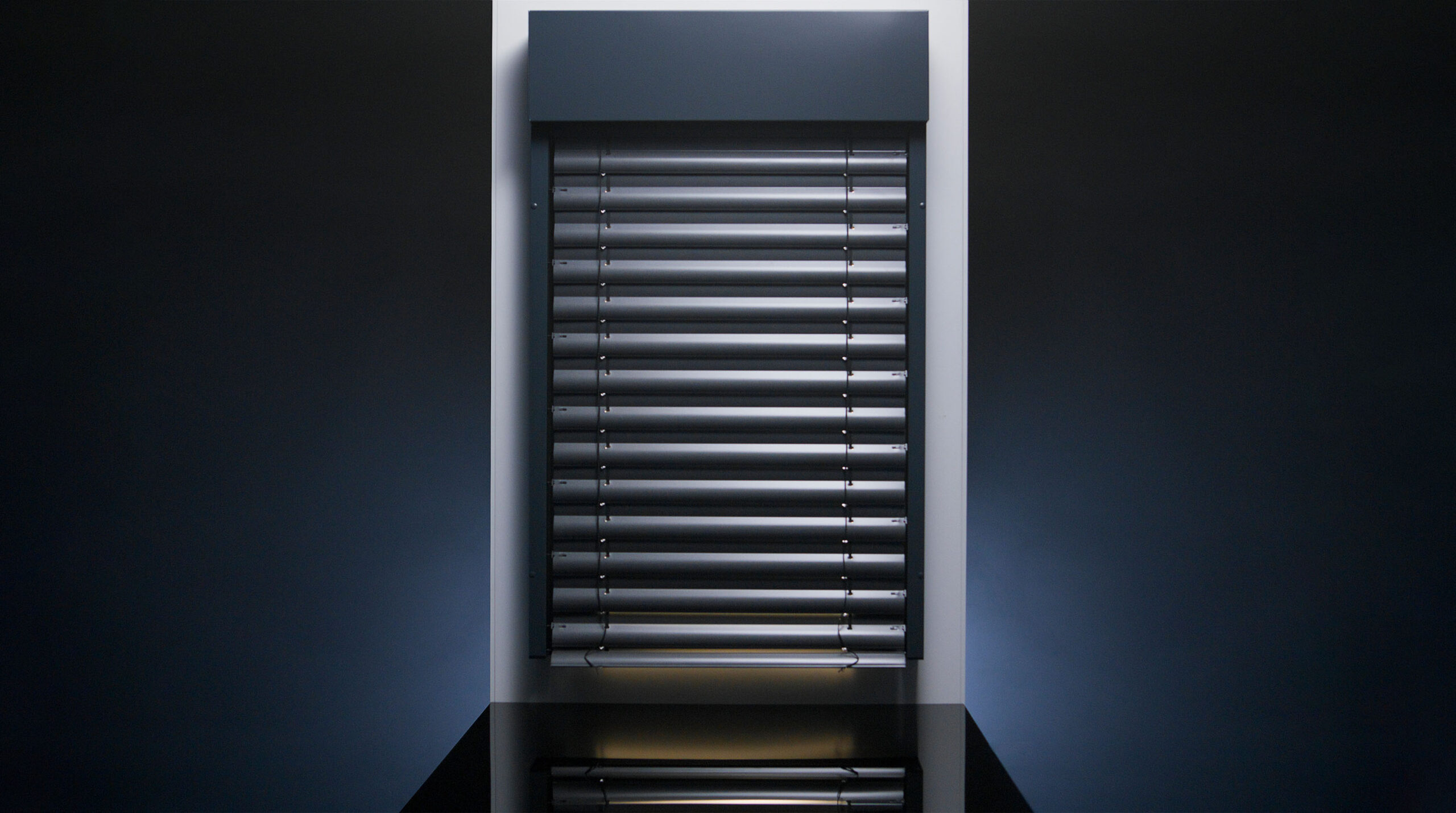External blinds
External blinds (Raffstore) provide perfect protection from the sun with the possibility of regulating the amount of light that enters the space. In addition to a wide range of models, Krpan and Krater offer different installation options, colors and slats, meeting all the aesthetic and functional requirements of your home or business premises.

EXTERNAL SHUTTERS PADDED
Information
Krpan external blinds are blinds with a standard performance system. The set of blinds is composed of standard slats, mechanism, classic carriers and guides, and a visible mask.
Krpan external blinds allow independent installation on all types of buildings. They are suitable for new construction as well as for the renovation of older buildings. The installation of these blinds does not need to be planned in advance, because they are installed after the facade is finished. Since the blinds are visible, together with the facade and carpentry in different color combinations, they further enhance the exterior appearance of the house. Krpan plaster blinds are installed on the building after the installation of windows and before the construction of the facade, which is why this type is more suitable for new buildings, since prior planning is required.
If we do not want the package of folded blinds to not reach the bright part of the window, it is important that we have the possibility to raise the blinds above the window, and we solve this by making a
tooth in the window lintel or install the window parallel to the outer part of the wall.
The plaster blind (mask) is covered by the facade, so that it is not visible from the side (that is, negligible). This means that it is an ideal solution for cases when we do not want to significantly affect the external appearance of the building.
The set of blinds is composed of standard slats, mechanism, classic carriers and guides, and plaster mask.
Installation options are:
- Standard installation – Visible mask
- Under-ceiling installation – Under-ceiling mask
All external visible and plastered Krpan blinds can be ordered in different designs:
you can choose between different types of slats (C-65 mm, C-80 mm, F-80 mm, Z-75 mm, Z-90 mm) with control via the MC stick (crank) or electric control, all in different color combinations (lamellas, masks, guides and end strips).
It is possible to install different types of mosquito nets under the blinds (fixed, roller, sliding, pleated); in this case, the depth of the blind is greater than 120 mm. Most often, the blind is mounted on a tooth in the lintel (that is, above the window). In the case of manual operation, the surface part of the blind above the window is raised up to a maximum of 11 cm in order to achieve an angle of 45° at the crank.

CRATER EXTERIOR BLADDER
Information
A characteristic feature of the KRATER blinds, which combine the blind system and the external blind, is that we install the complete blind before the facade.
And with the facade design, it is not necessary to process the beams, since the massive aluminum guide on the side covers most of the beams.
We can easily install a roller mosquito net in the blind, since it is the only system that already has everything prepared for immediate or subsequent installation in the basic version.
- Aluminum slats 0.40 mm (C-80 mm, C-65 mm, Z-75 mm, Z-90 mm)
- Alu compact guides, ALU mask
- Limit values: width 4000 mm, height 4500 mm, area 9 m 2 , wind class 3
- Control via MC stick or electric motor (switch or remote control)
- The colors of the slats are divided into 4 price classes – color sample
- Guides, closing strips are standard white (RAL 9010), gray (RAL 9006, RAL 9007, RAL 7016) and brown (RAL 8019). The mask is white (RAL 9010) and raw (RAL 9006). Other colors – additional charge.
- Slat guide in every other slat
- The strips are gray, the scales are white, gray or black, the lamella guides are white, brown or gray, the color of the plastic parts is black
- Modern look
- Compact design
- Simple and quick assembly before the facade
- Hidden guides
- Possibility of plastered or visible installation
- The possibility of installing a mosquito net
We operate the shutters manually with an automatic machine and a control stick (crank) or electric motors.
With the electric motor drive, we avoid heat loss caused by openings for mechanical transmission of control. In the basic version of the electric drive, the blind is controlled via a switch, and in the more comfortable mode with the help of a remote control, which requires the use of an electric motor with built-in receivers, and at the same time it provides numerous control options.
We can use remote controls that control a certain number of blinds or time
clocks that allow you to set the blinds to be raised or lowered at a specific hour or day. With that
we create the impression that we are at home, even though we are away. And climate sensors make even more possible
which regulate the shades according to weather conditions such as sun, wind or rain.
Blinds equipped with electric drives can be easily connected to the central monitoring system (CNS), which are an integral part of intelligent houses.